I flew 2400 kms to not talk to Hideo Kojima
Behind-the-scenes at a panel interview with a gaming legend.
You bet I was jazzed to not talk to the legendary game developer Hideo Kojima. If you’re not going to talk to someone, Kojima is a solid choice. He’s the world’s first rockstar developer for Gawd’s sake! A creative visionary. A dude.
Nope. I can’t think of anyone better to not talk to than him. So that’s exactly what I did a couple of weeks ago.
But just because we weren’t going to exchange words didn’t mean we weren’t going to exchange ideas. And that’s the reason why I was so excited to spend the guts of a work day sitting on two different planes and crossing international waters to get to Sydney, Australia, and then doing the same a few days later to return home to Papamoa Beach, New Zealand.
I mean, an opportunity to not talk to Hideo Kojima only comes along once in a lifetime. If you’re lucky. You’d be a damn fool not to take it.
In my capacity as a freelance arts and culture writer — and surprisingly not as a Pixel Fix co-founder — I’d been invited to join a Q&A panel being held by Kojima at PlayStation’s Sydney HQ. This was part of his World Tour that saw him travelling the globe to promote his highly anticipated new game, Death Stranding 2: On the Beach. And now, on this grey and drizzly Friday afternoon, he’d hit Sydney.
Kojima’s main event was a panel conversation with fellow auteur, Mad Max visionary and his good friend George Miller at the Sydney Film Festival the next day. Tickets for which had sold out the city’s grand Town Hall within an hour of going on sale.
But seeing as he’d come all this way, he’d also carved out 45 minutes to chat to a dozen game journalists about the game the afternoon before his appearance at the SFF. We’d also find out he’d carved out some time to visit the Zoo. But I’m getting ahead of myself here.
I arrived at PlayStationHQ with what I considered to be a reasonable safety buffer of five minutes before kick off, but the lovely PlayStation rep waiting down in the lobby to buzz me up let slip that I was the final journo to arrive. As the lift shot upward, I hastily chewed down three mints and again rehearsed aloud the Japanese greeting I’d cobbled together from various YouTube videos as the building’s bricks unsettingly whizzed past the glass windows of the lift.
“Konnichiwa, Kāru desu. Hajimemashite,” I muttered. “Konnichiwa, Kāru desu. Hajimemashite.”
At this point, I didn’t know if I would or would not be talking to Kojima. While group panel interviews, aka roundtable interviews, always have a moderator (someone to keep things moving and call each journo in turn), they can go either way. Sometimes you get called upon, sometimes the moderator asks your question for you. But, remembering my Cub Scout training, I’d come prepared in case I would be standing up to ask Kojima some Q’s to be A’d.
My Q for you is, ‘Would you care for a free subscription?‘.
These questions had already been submitted. Days before the panel, we’d been asked to send in five questions in a priority order. I’d of course realised that with a dozen other game journos asking five questions each, there was no way he’d get through them all in the short time we had. So I spent a couple of the days before the deadline mulling over what I’d ask and shuffling around their order of priority. I knew the other journos would ask about the gameplay and cover technical stuff, leaving me free to ask bigger questions around the themes and obsessions of his work.
During the group interview, there were a lot of questions around the “connection” part of Death Stranding, a topic I felt he’d already covered fairly extensively. I was considerably more interested in the death part of Death Stranding. In particular, his views on the afterlife and the great meaning of it all, something I considered hugely relevant, seeing as the dead play such a prominent part in this game franchise.
But first, I had to find a seat. As the last one to arrive in I’d resigned myself to filling a space right at the back of the room in the cheap seats. But nope! It seems the Aussies had a case of stage fright, allowing me to waltz right to an empty front row seat, smack bang in front of where Kojima would be sitting when he arrived. It was the best seat in the house.
And then there he was, looking every bit the rockstar developer that he is. He wore his famous floppy hair and rectangular specs, sneakers and black jeans and an incredibly cool, pitch black t-shirt with the words Death Stranding 2: On the Beach World Tour in a silvery grey on it. The word SYDNEY was emblazoned underneath the title, and underneath that was the game’s now iconic winged baby. Greedily, I thought we might get handed one on our way out as a memento of the event. This caused my excitement to double, but the only thing I left with was a gourmet fried chicken roll, an oversized lamington cake and the warm glow of basking in his Kojima-ness for the previous 45 minutes.
The buzz in the room was electric, and as Kojima took his seat, he cracked a joke.
“There’s every phone under the sun,” he said, via Aki, his translator, and gesturing at the long row of phones we’d all placed on the table in front of him to record his every word. We all laughed, and then it was straight down to business.
The moderator was part of PlayStation’s Sydney PR team, and she did a great job. She’d prepared a slideshow and told us she’d be reading out the questions for Kojima to answer.
The first question was lame as hell, but also exactly what I’d expected for an opening question.
Death Stranding 2 is set in Australia, and as we were in Australia with a room full of Australian game journalists, it was always going to be the first thing asked. If we were in Aotearoa, New Zealand, with a room full of Kiwi journos, the exact same first question would have been asked, so I bore no grudge.
“What drew the team to bring Death Stranding 2 On the Beach down under? And have you on your team visited any Australian regions or used any real-life locations as inspirations?”
“Well, I've been asked the same questions ever since [landing] in Australia,” Kojima replied, before giving the same answer he’d given every time he’d been asked this question in the lead-up to release both here and elsewhere during his World Tour.
“Eurasia is too big. Africa's maybe too small,” he said. “So I thought Australia would be a perfect fit.”
Then he cracked another gag.
“But the real reason I selected Australia is usually, when I decide on a location, I go location scouting in that area. I go there to scan or to interview, and things like that. The last time was Iceland. But it was a little cold. So this time I'm making a little warmer in Australia.”
We all laughed, and the moderator moved to the next question.
“In Death Stranding 2, there are many animals from Australia. What inspired you to add other nature to the game? And was it tough to include Australian animals in the game?”
“I love animals,” he replied.
Share this article with your animal-loving friends!
I was happy that this signalled the end of the Australia-centric questions — no offence, Australian chums— and even happier that the next one focused on his creativity.
“You said before that your creativity is born from consuming and synthesizing art and ideas. What were you consuming and what formed the initial concepts or ideas of Death Stranding 2?“
“When I see movies and get ideas, usually just talking to people, eating or walking, or maybe I'm in a bath, I come up with these ideas. So it's almost like a disease, I call it,” he laughed. “Even when I'm talking with my family, in my head, I'm in a totally different world.”
It was an exciting answer and I was hoping we’d keep walking in that direction, but the next question was techincal and boring (“What is the core gameplay change or new addition you find yourself most proud of in the jump between Death Stranding 1 and Death Stranding 2?”) and the next one was something he’d already answered many times during his World Tour (“Given that connectivity is such a big theme in Death Stranding, what do you think are the hazards of over-connectivity and digital overload, and how it changes the way we interact with one another?”).
A question about who was the game’s “freakiest character” was fun but got a little lost in translation before being politely declined an answer as it would be “a major spoiler”. A stance I respect.
The next question about the idea at the “game’s heart” also saw Kojima deferring. “I don't want to spoil so much,” he said.
By now, we’d ticked past the half-hour mark and only got through a handful of questions. There was no way we were going to get to even one question from each of the assembled journos. It was also becoming apparent that there had been a fair amount of PR bias applied to the questions being selected and the order in which they were being asked.
As I ran through the questions I’d submitted, questions that dealt with his philosophical mindset, his existential reflections and how his beliefs of what happens after death influence both this game and his work in general, I realised that the questions being asked were based on a criteria that mine had wildly deviated from.
As the moderator asked the next question, “You famously described the original Death Stranding as the world's first ‘Strand-type game’. Is the sequel a continuation of that genre?”, I fought to keep my eyes from rolling out of my head.
“Yes, of course,” Kojima answered.
It quickly dawned on me that there was little chance that any of my questions were cued up on the moderator’s list.
“Do you think it's become easier or more difficult for you to make a game now, compared to when you started in your career?”
“How did the team approach dynamic weather in Death Stranding 2?”
“What interests you in cameos?”
But such is the way of roundtable interviews. To paraphrase the banger theme tune from the old 80s sitcom The Facts of Life, you take the good, you take the bad, you take them both, and there you have the sort of questions that will be asked in a group interview. All you can do is roll with it.
Even still, in a display of his genius, Kojima managed to spin gold from the straw he was given, taking these questions and extrapolating his answers into thoughtful and interesting replies, and even cracking the odd joke along the way. I’d been worried at first, but as the session progressed, I knew he’d provided more than enough for me to cherry-pick from when it came time to write my feature.
Yes, it was a bummer that the opportunity for a deeper insight into the man and his beliefs had gone wanting in favour of some overly predictable questions, but it was still a helluva exciting event to be a part of, and I greatly enjoyed participating. It was a total privilege.
And who knows? Maybe one of my questions would have been up next if we hadn’t run out of time. Maybe they were simply being asked in the order in which they’d been sent in. Mine would have undoubtedly been the last to be received, putting them right at the bottom of the queue.
Maybe I just needed to take off my tinfoil hat.
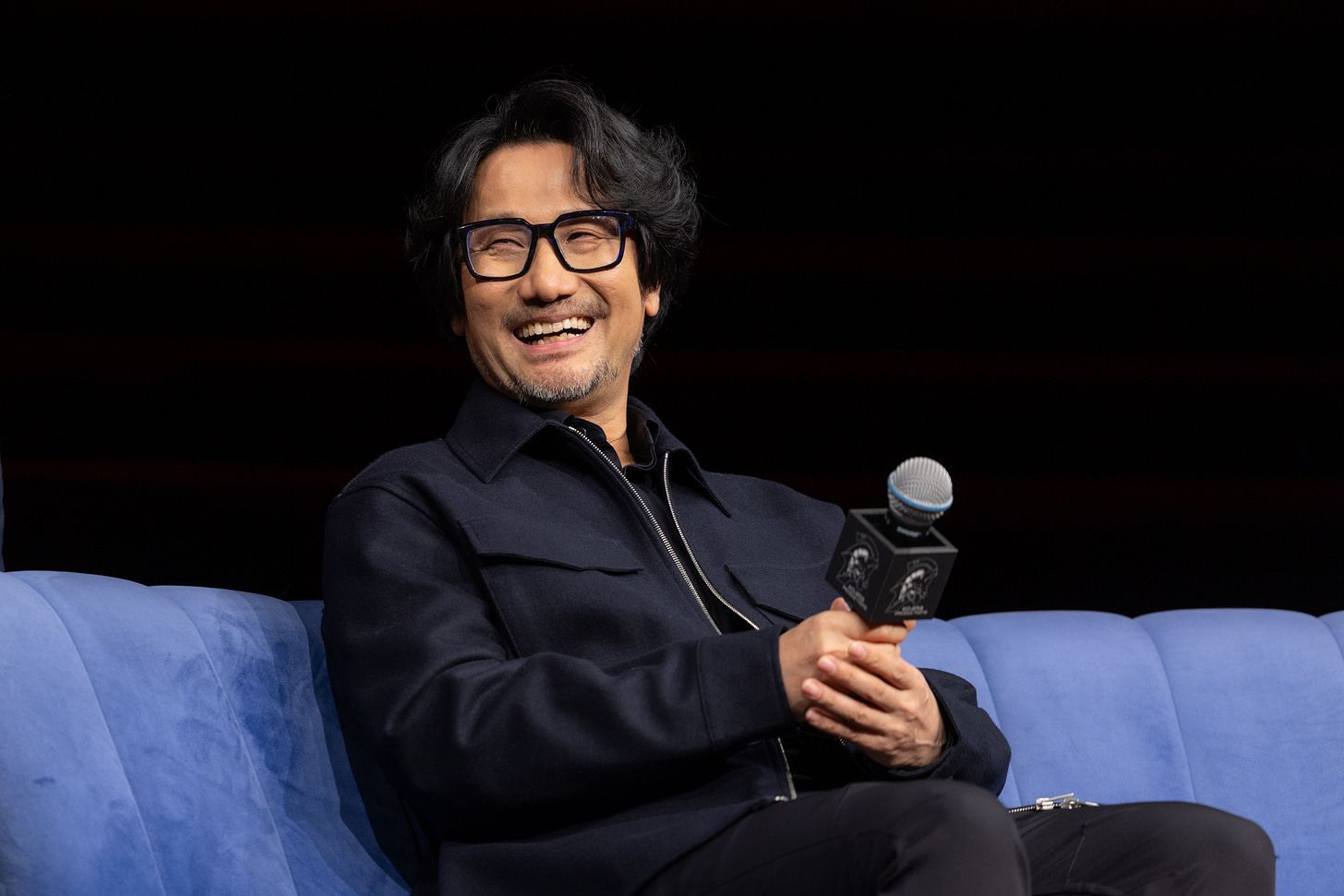
With that realisation, I entered a state of zen acceptance and simply enjoyed the moment. And then the final question was asked.
“How has your life experiences, from making games in the midst of the pandemic, to your legacy as a game developer at 61 years old, influenced the narrative and development of Death Stranding 2?”
I could have applauded. It was the most interesting question of the session, sneaking in right before the bell, and Kojima’s thoughtful and frank answer would form the basis of my feature.
With that answered, there was just time for a quick group photo and then, in a puff of cool, Hideo Kojima was gone.
After nabbing a fried chicken roll and a giant lamington cake from the counter at the back of the room, so was I.
Death Stranding 2: On the Beach is out now on the PlayStation 5.






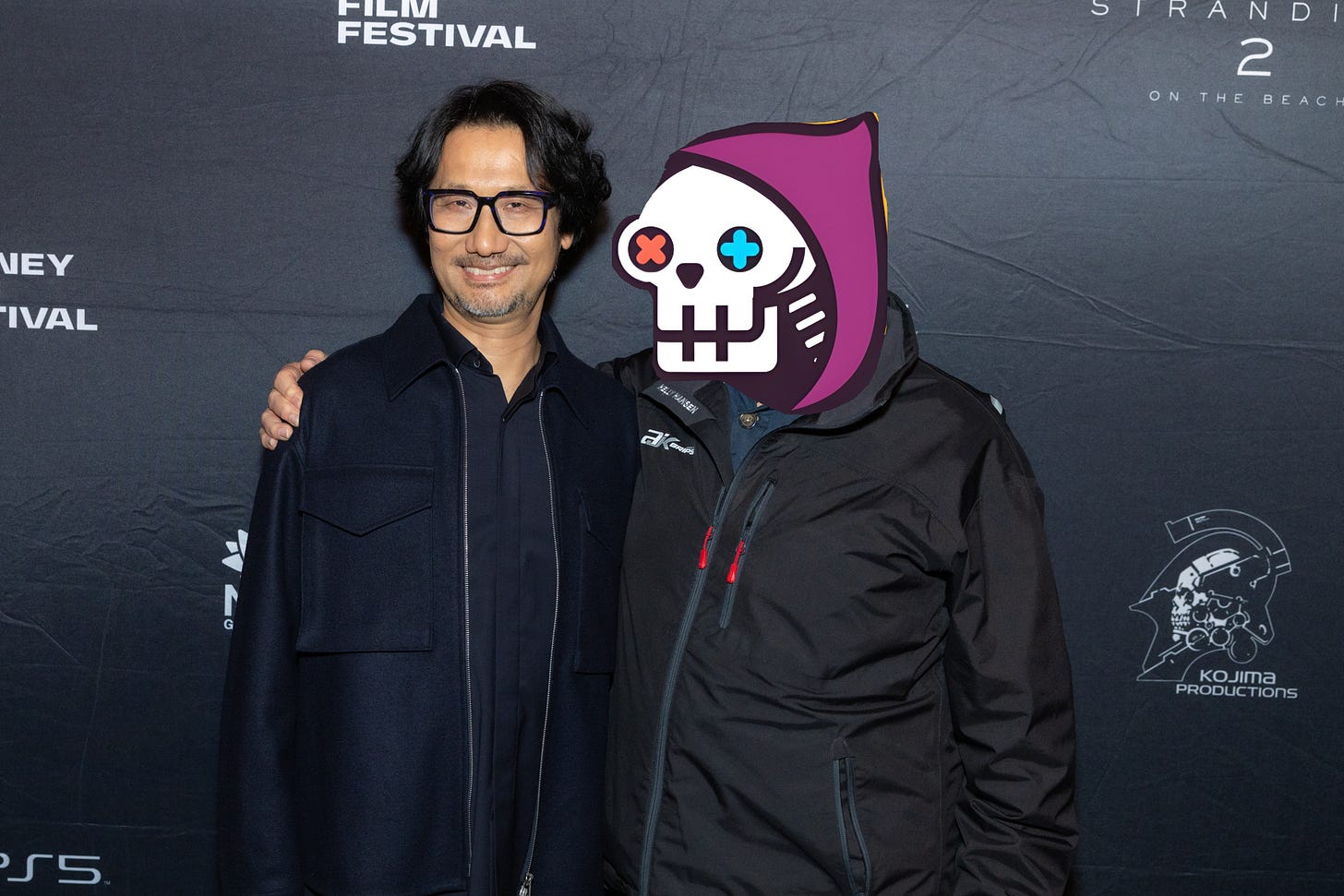
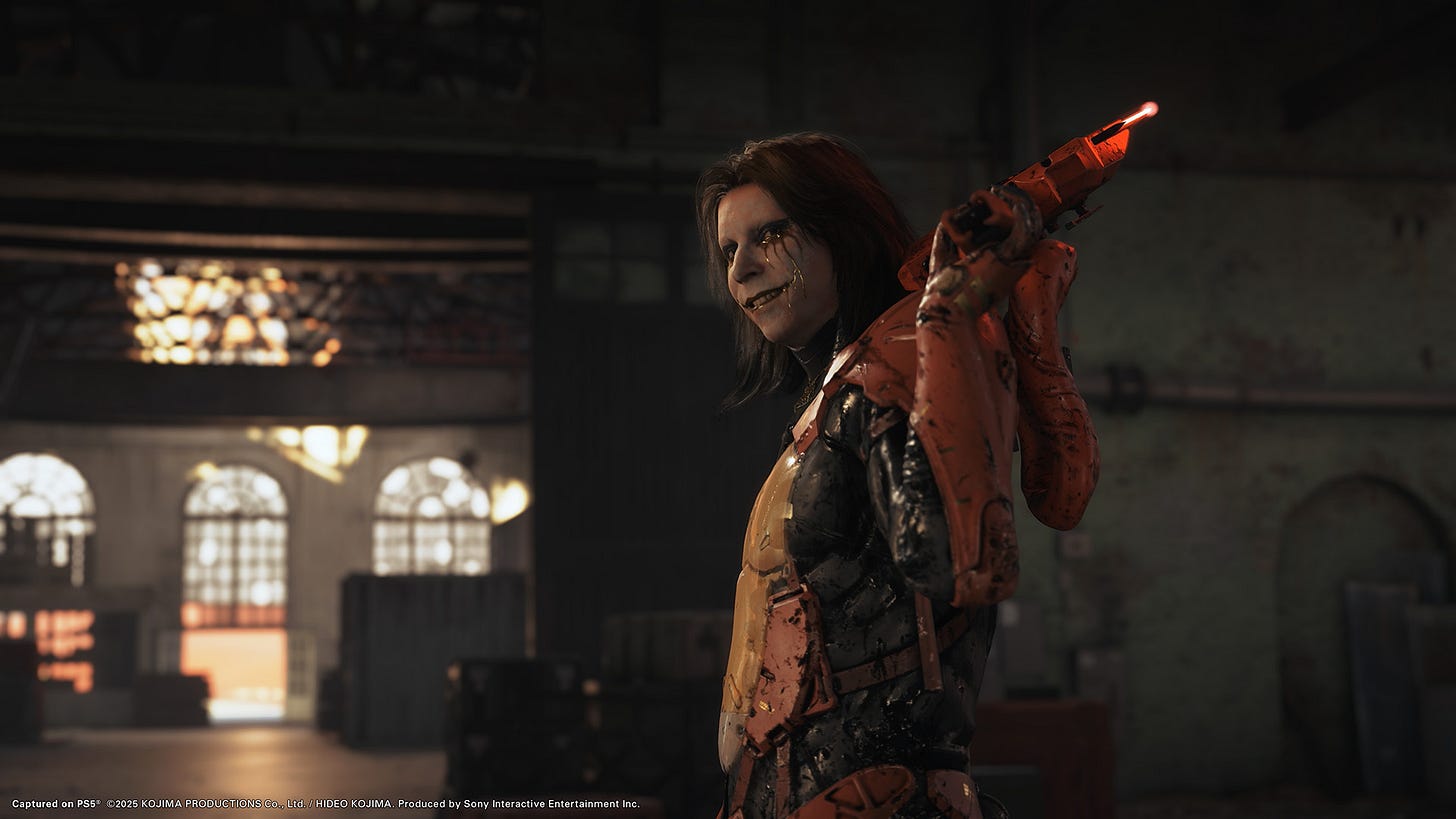
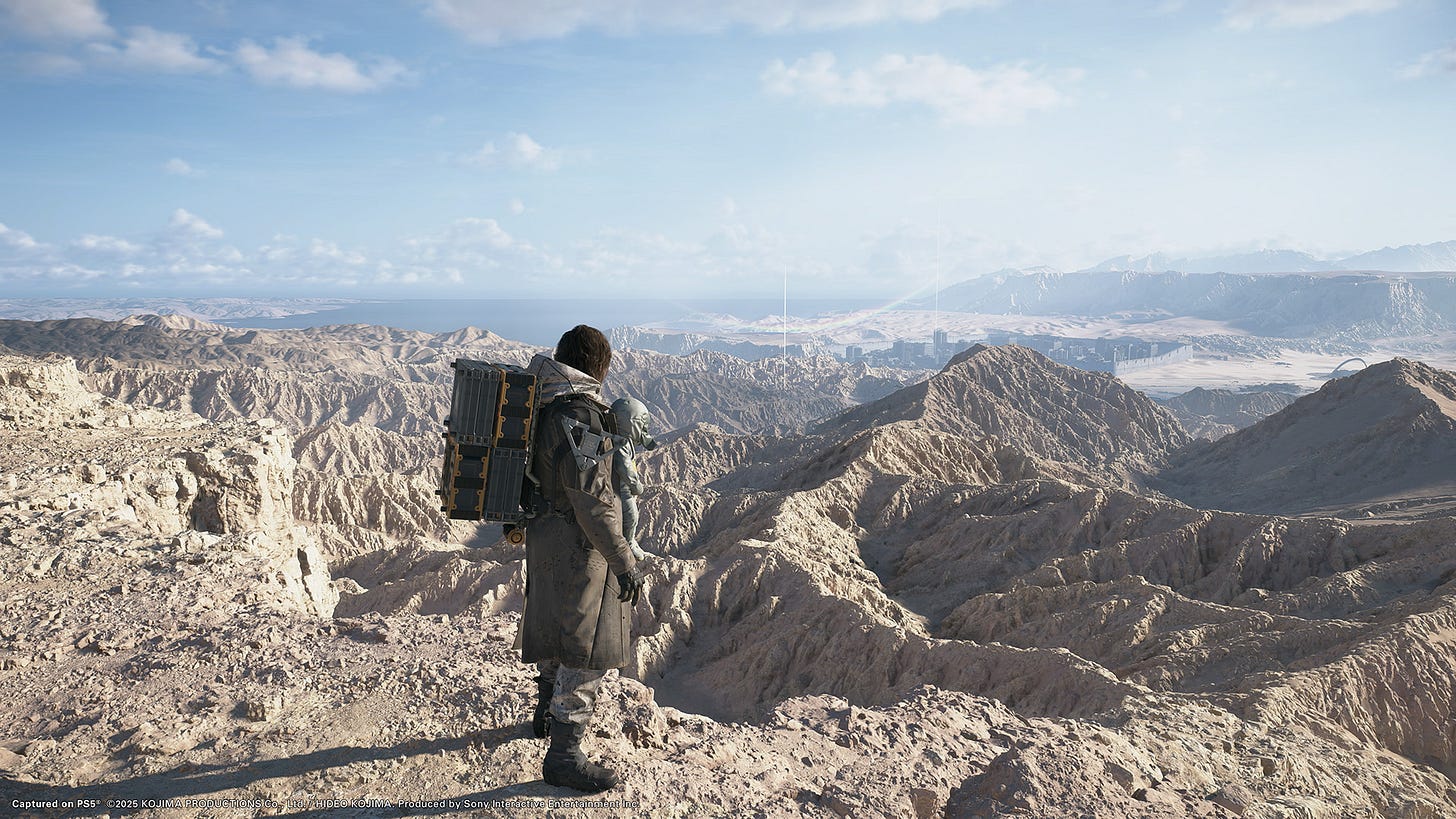
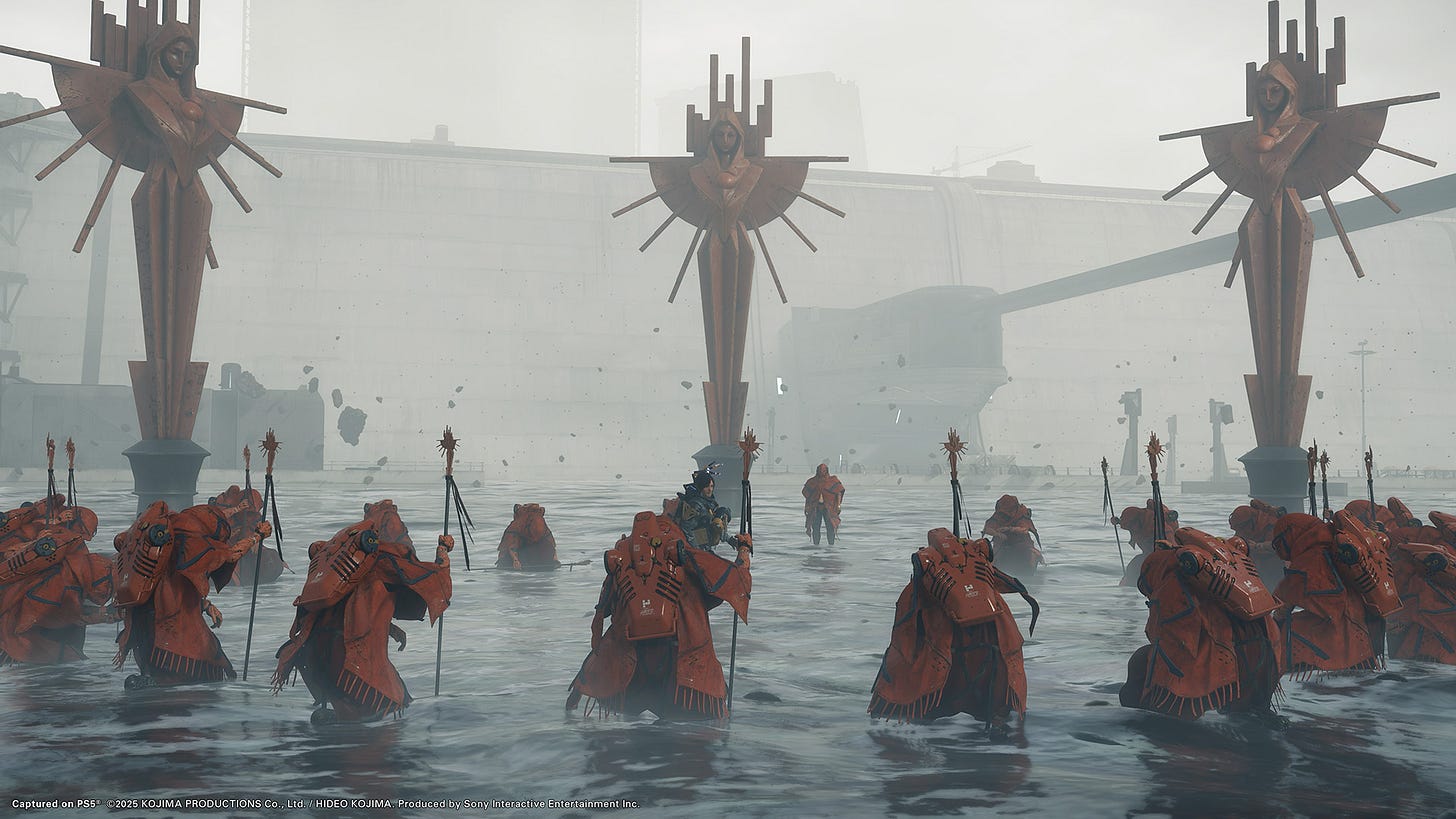
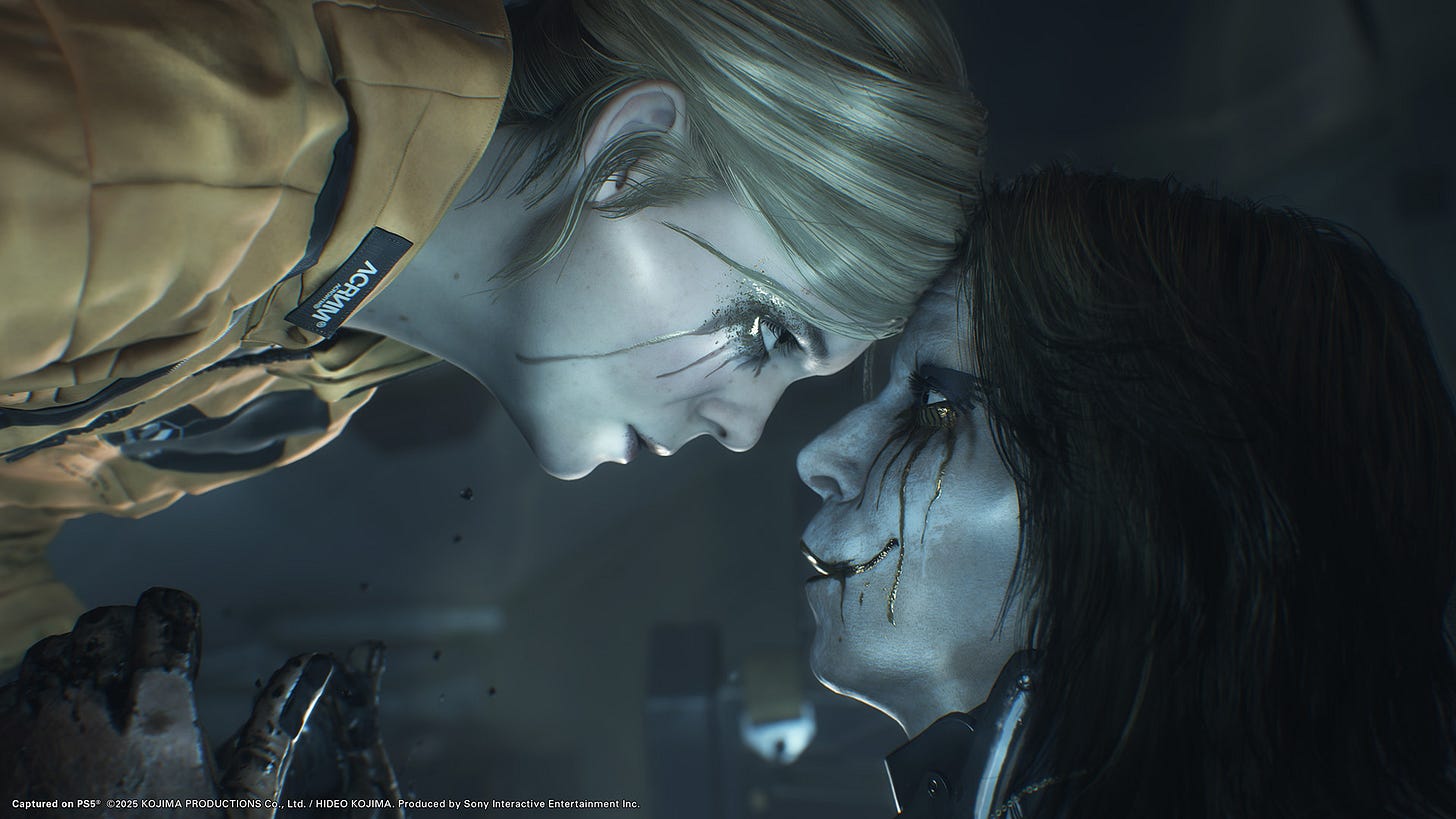
How frustrating. Though, given we've both gone to press events... were you surprised?
This reminds me of one of my favourite ever pieces of writing on the internet: https://lookrobot.co.uk/2013/01/14/the-panasonic-toughpad-press-conference/
It's a very funny, inside look at the nonsensical nature of press events. Especially the tech ones. I suspect videogame ones are up there.
I used to be subjected to them. One event I went to was punctured by the appearance of the "4G dancers", men and women in full latex running around with iPads strapped to their hands and knees. I can't un-see it.
For what it's worth, your question was a great one. Looking forward to reading your other article!